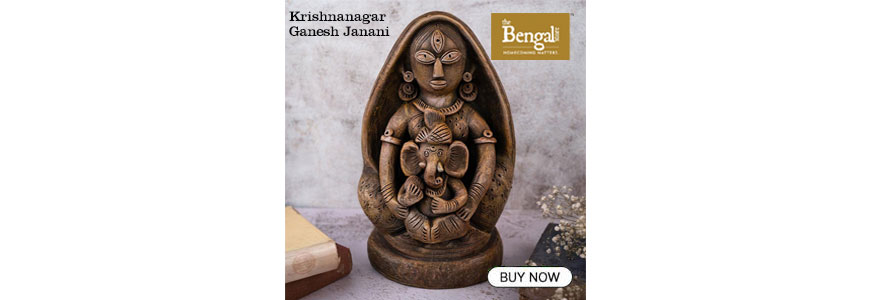Bengalis and sweets go hand in hand
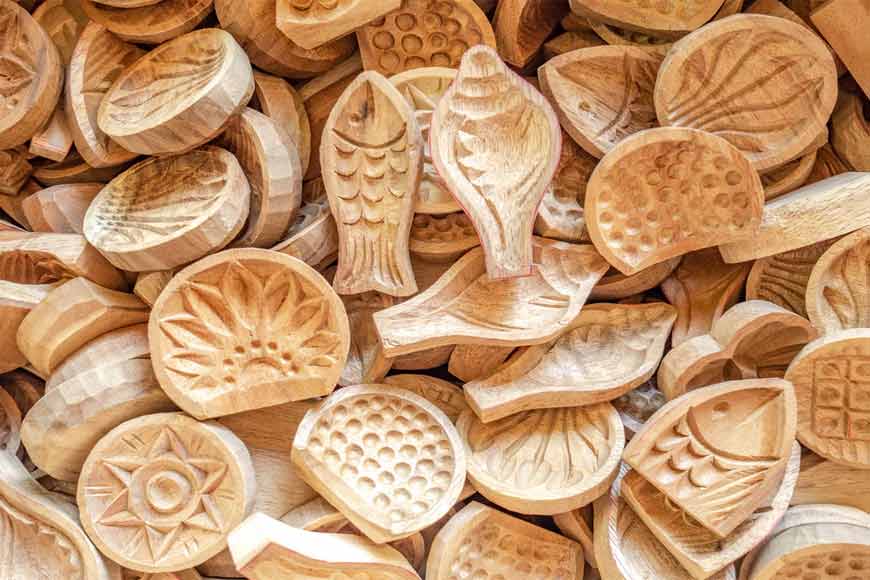
The artistic sense of Bengalis invariably found expression in their traditional spirit of hospitality and also in the food they served to their honoured guests, howsoever plain the fare might be. Just as their culinary skills were evident in the variety of items they prepared for their guests, so did the sweets, which the Bengali housewives serve as dessert on conclusion of the main courses, bear distinct testimony of their keen artistic consciousness – a matter of immense pride for the entire community.
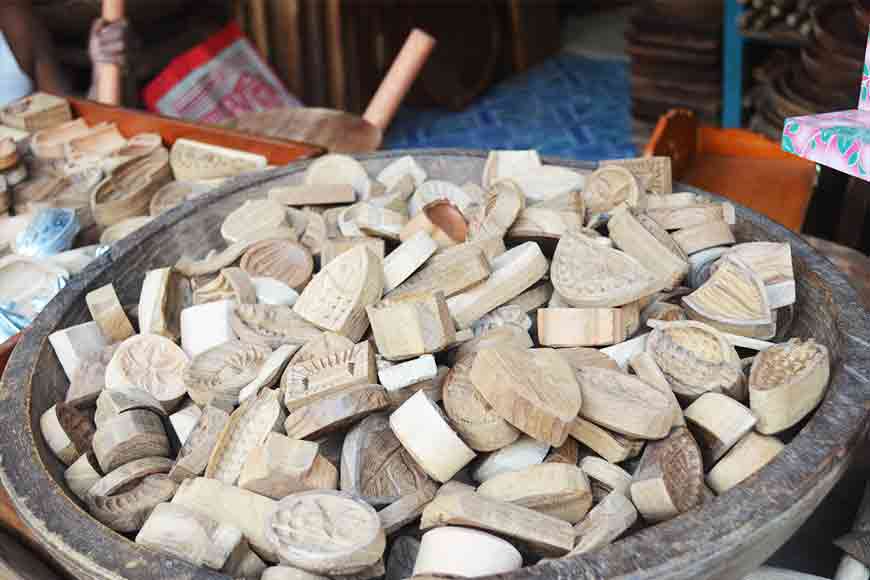
Unlike the much advertised sweets sold in the sweetshops of today, the sweets prepared by the Bengali confectioners of those days used to be a source of satisfaction both on account of their excellent taste, as well as a distinct allure in shape and appearance. This was because various delicacies such as Sandesh (curdled milk mixed with sugar) khirer swasti (thickened milk) and chandrapuli (sweetmeat made with grated coconut, milk and sugar) were prepared by pouring the blended ingredients into moulds of beautiful shapes. These moulds are usually of various geometrical designs, such as square, rhombus, triangle, circle, semicircle and so on. Some moulds were made in the forms of objects such as fish, lychee, custard apple and conch shell. Again there were moulds shaped like bowls and some were totally flat.
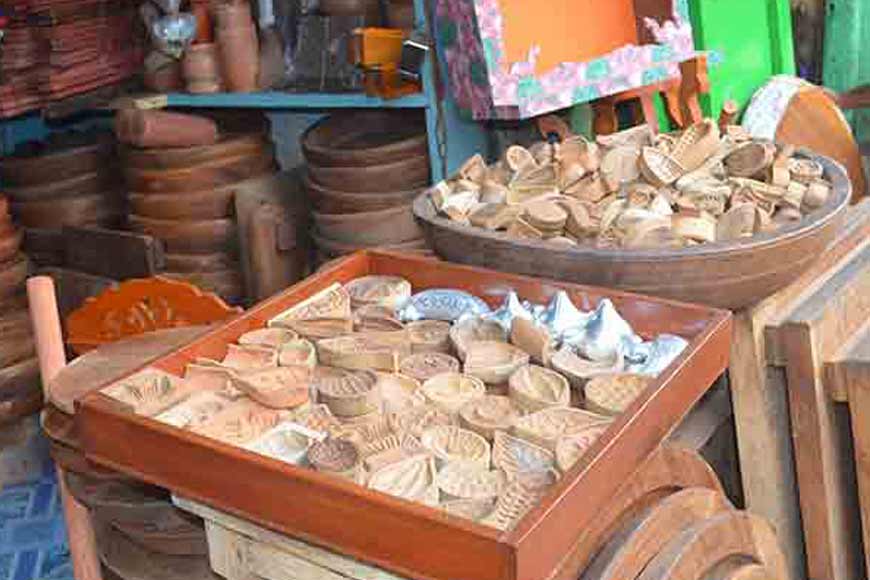
Apart from moulds in the shapes of fruits and flowers with leaves, there were moulds displaying peacocks, birds, horses and elephants. There were various patterns adapted from the designs of alpona. Sometimes moulds were made to display a few lines from Bengali lyrics or extracts from Sanskrit slokas containing moral advice or counsel.
Also read : Bengal’s Sponge Wood Art and Malakar community
Among moulds used for ceremonial occasions, some commonly used ones were gatroharidra (application of turmeric, a pre-marriage ritual), Subho Bibaha (happy marriage), phul sajjya (bed of flowers for the bridal chamber), milan ratri (the wedding night), Shukhey Theko (may you live happily) and so on. And then at times, a few specially engraved moulds prepared by expert craftsmen were found at some homes, such as moulds displaying a British couple seated on chairs or a sahib enjoying a smoke and so on. During India’s freedom movement, the womenfolk of Bengal did not hesitate to use moulds that even carried slogans like Vande Mataram (homage to the Motherland).
Like Sandesh and Chandrapuli, Amsatta (dried mango pulp) was another item that was prepared by the women by using large moulds of the size of plates. Aam (mango) is a common fruit of Bengal while Sandesh and chandrapuli are two common sweets of the state, but the distinction made between these items was noticeable from their respective shapes. Because of the easy availability of mangoes, the size of the amsatta was naturally larger.
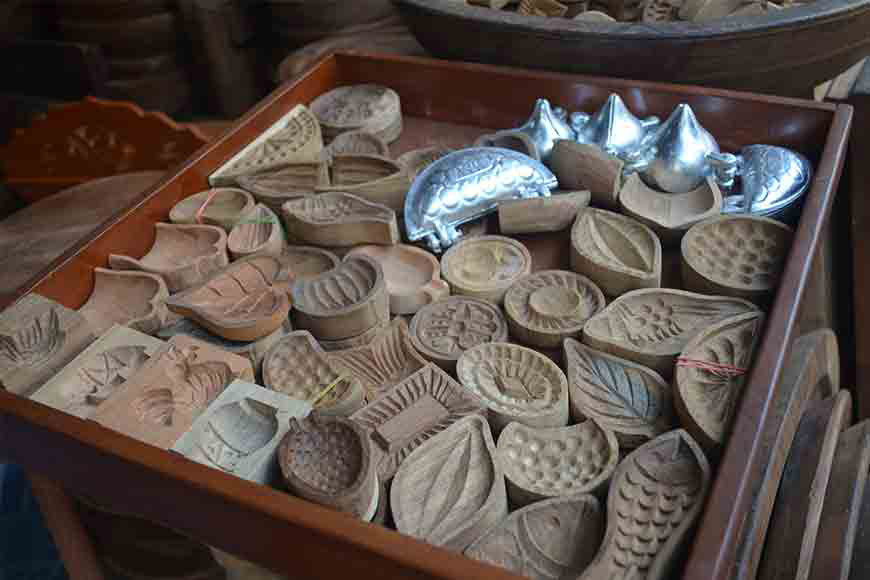
During ceremonial occasions there was a tradition of using specially prepared moulds suited for that particular ceremony. For sweets sent for the Gaye Holud ceremony before the wedding, moulds of a variety of fruits, flowers, leaves and creepers and several birds and animals were commonly used, while moulds of butterflies were given priority in the sweets delivered to the bridal chamber.
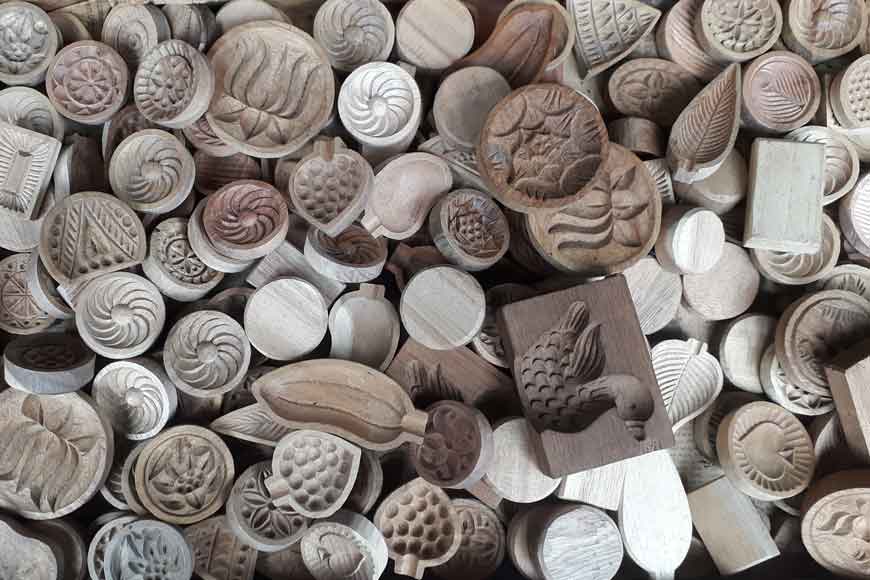
These works of art created by the village women through the combined application of their artistic sense and craftsmanship were in no way inferior to the present day version of graphic arts. The patterns adopted in these moulds were the same as were usually seen in other domestic works of art such as alpona, kantha and so on. The medium might have been changed, but there was no departure from the special style and beautiful finish and they all served to symbolize the cultural heritage of this land.
Source: Folk Arts of West Bengal and the Artist Community
By Tarapada Santra







